The Weeks Division of MyMac Labs recently took two CableJive cables for a test drive: the dockXtender and the duaLink. Here’s what we learned.
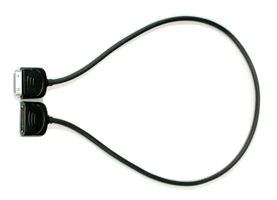
The dockXtender is the simpler of the two devices. It’s an extension cable, plain and simple. If the current docking cable for your iPod/iPhone/iPad is too long or too short, the dockXtender may be the right length. You can purchase it in two feet (60 cm) or six feet (180 cm) lengths. The dockXtender is solidly built, but the cable’s not so thick that it’s not flexible.
Be aware this cable is NOT for connecting your iDevice to your computer; it’s a 30-pin to 30 pin cable that allows you to move your iDevice further away from the gadget that also uses the 30 pin connector at the other end of the dockXtender. For most users, this will be external speakers or a docking station. It will pass all audio, video, and power from one device to the other.
The CableJive duaLink is the more intriguing accessory. It’s a splitter cable that allows you to connect two iDevices to a single USB port. Owners of multiple devices that use USB connections often rue the lack of enough conveniently located USB ports to hook up to. The duaLink addresses that need perfectly by cutting the number of required USB ports in half.
Here’s how it looked connecting an iPod and iPhone to a USB port of the back of our 24″ Cinema Display.
The duaLink has a tiny USB hub built in, so both devices will be recognized as two separate devices to the Mac or PC.
We found only one issue with the duaLink, and it’s not really a duaLink problem. We first connected our iPad and iPhone using the dualLink plugged into the right USB port on our wired Apple Keyboard with Numeric keypad. Almost instantly, we got a warning:
A few quick Google searches later, we learned the USB ports on the wired Apple keyboard are not high-powered USB ports. There are two types of USB ports; high and low powered ports. We then plugged the duaLink into a USB port on the back of our 24″ Cinema Display. We got no warning message, so we concluded the Cinema Display ports are high-powered. Plugged into the Cinema Display, both the iPod and iPhone were happily charging, and both appeared correctly in iTunes.
Accordingly, CableJive publishes the following notes on the duaLink.
Note: duaLink is designed for computers and does not work with wall or car chargers. If you’re looking to charge multiple devices from a wall or car outlet see the dualCharge or dualCarCharge.
Note: duaLink will sync an iPad with iTunes when connected to a computer, but the iPad will not charge. The iPad requires all the juice output by the USB port. The duaLink splits the charge, giving the iPad less than necessary.
Conclusions.
CableJive’s dockXtender is a well-built dock extension cable. Just make sure it’s what you need; it connects two devices using 30 pin connectors. Our only complaint is that, at $25.95 for the two foot version, and $31.95 for the six foot length; it’s rather overpriced.
MyMac.com Review Rating: 6 out of 10
The duaLink is a splendid little splitter cable that connects two devices to one USB port for both charging and syncing. At $25.95 the duaLink is a bit pricey, but it may be worth it to solve your cable clutter and USB port shortages.

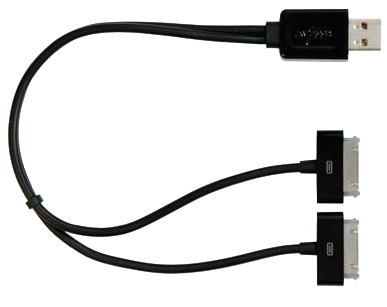
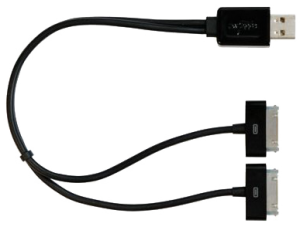
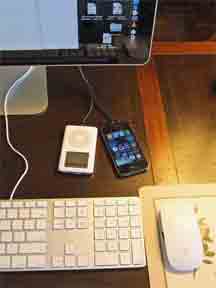
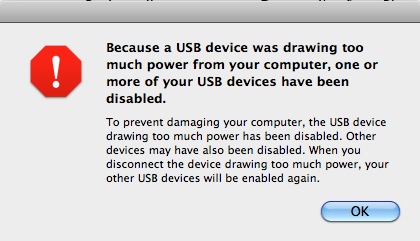
Leave a Reply
You must be logged in to post a comment.